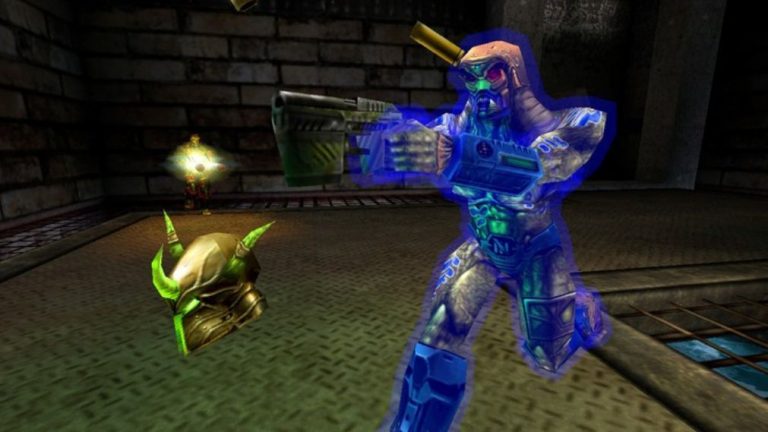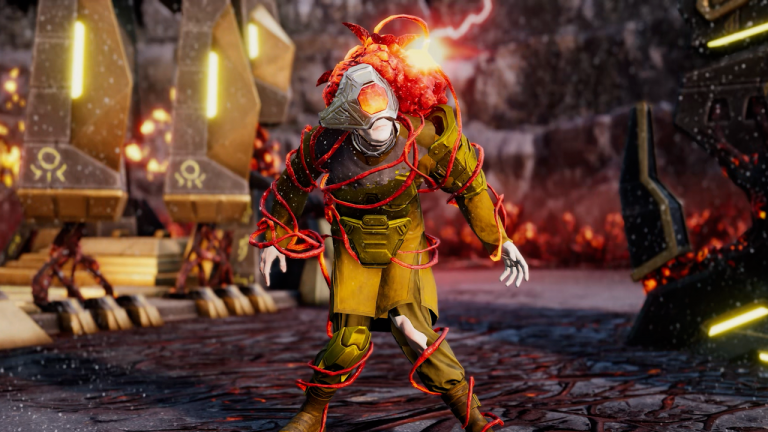The Kanto Ora desktop speakers first underwhelmed me with their look, only to overwhelm me with their sound. When it comes to visuals, I don’t know if I could pick the Ora out of a hypothetical speaker lineup (or what kind of crime they may have committed to get put there) but once I start cranking the bass and blasting tunes, it starts to matter less and less.
There’s a certain confidence in the aesthetic of the Kanto Ora speakers. They don’t need to be crammed with RGB, or have angular architecture to catch the eye—all the Kanto Ora needs to do is catch the ear, and it does this very well.
Out of the box, the Oras just need to be hooked up to a power socket, plugged into each other, then connected to an audio source. Unfortunately, the box only comes with the power lead and cable to link the two speakers up so you have to source your own USB-C or RCA cables to get it online.
If you lack any of these, it does have a rather great Bluetooth mode, but this can be somewhat limiting as Bluetooth doesn’t support lossless FLAC Audio. No aux jack means getting very high-quality audio from your phone is a challenge but this is admittedly, a bit of a niche use case.
Being someone who throws my spare cables into a miscellaneous bag like a sitcom character trying to clean their apartment before a date arrives, this meant a few minutes of fishing around for wires before I could get everything set up right. However, once you get your cables together, everything functions perfectly. And, with the ability to flit between Bluetooth and wired mode by just clicking the front of the right speaker, I often found myself passively swapping audio sources in seconds.
This is a real privilege that hits at what makes the Kanto Ora speakers work so well—they feel designed to fit unobtrusively into a space. They aren’t a centerpiece but a supporting actor. They are the bassline holding the groove down while my RGB-laden PC shreds all over it.
You do pay quite a lot for that supporting act, especially when you consider you can get many of the best PC speakers for less. However, this shows in not only a strong build quality and connectivity options but also a great sound. Without any extra add-ons, the Ora can get very bassy, especially when you boost it and let the speakers boom.
(Image credit: Future)
(Image credit: Future)
Fortnite’s eclectic mix of emote sounds, Fortnite Jam songs, and the hail of gunfire all come through clearly and drive home the annoyingly fun overstimulation at the core of its gameplay. Dead By Daylight, with a litany of scratch effects and vaguely horrible squelches also feel full and real —the only time I’ve been pleasantly surprised that a wet slap noise feels lifelike.
Due to the Ora’s almost comedically small size, my partner thought it would be funny to test out the Kanto Ora on Rebecca Black’s terribly catchy Friday hyper-pop remix. As the bass connected and fully rocked her little PC stand, we both felt the horrifying silence of worrying the next day would be accompanied by a noise complaint. Luckily, the neighbours didn’t seem to mind the small earthquake we had summoned.
Some bassy setups can fall into the trap of neglecting the rest of the soundscape so my next test was The Hotelier’s wonderfully dynamic and sorrowful “Home, Like Noplace is There”. It passed with flying colours, placing the sharp jangle of an overdriven guitar and warmth of harmony effortlessly. By the time I got to “Housebroken” in the middle of the album, I was enthralled with the sound, and that’s only partially because of how great the song is. When at lower volumes, the mids can feel a tad hollow in comparison to everything else, but not so much that I felt I was hugely missing out.
(Image credit: Future)
(Image credit: Future)
(Image credit: Future)
✅ You want a clean no-nonsense setup: Thanks to a fairly understated look and small form factor, these speakers work excellently on my desk that is, admittedly, too small for most audiophile setups.
✅ You want something for a phone too: Given the speakers support USB-C connectivity, as well as Bluetooth and RCA, you can connect it to your phone and desktop easily. You do lose out on lossless FLAC audio when connected to Bluetooth but that USB-C connector means you can connect it to most phones.
✅ You want great sound: These do just sound great, with a surprisingly bassy offering, even without the subwoofer. For their stature, you can crank the noise and get something that sounds excellent.
❌ You’re on a budget: These are a great choice but, being north of $300, and even more, if you want the perfect setup, they are quite expensive. You can get a reasonable experience out of a cheaper set of speakers, even if it won’t be as good.
❌ You want something flashy: Though the audio quality does wow me, the looks certainly don’t. They function cleanly but, if you want a gaming setup worthy of a Zoomer TikTok, you may be better off looking elsewhere.
❌ You want a dedicated gaming speaker: The Kanto Ora are at their absolute best as multimedia speakers for gaming, listening to music, watching movies, and more. For a similar price, you can get speakers with dedicated gaming features but these are perfect for a more general use.
Being over six inches tall, four inches wide, and mine being all black, the Kanto Ora looks understated on a desk, and this is only made better with Kanto’s speaker stands. Though $60 for what are essentially metal brackets feels quite expensive for a job that a few books can do almost as well, it’s hard to deny the quality on offer here. The brackets come in a few different sizes and this can affect the presentation of sound from the speakers, given their size and placement in the room.
This brings me to the most expensive, yet greatest, add-on available—the Kanto SUB8 subwoofer. Priced at $80 less than the speakers themselves, this subwoofer can be connected by the sub-out output on the back of the speakers and plugged into the mains separately.
Like the speakers, the SUB8 has a clean, effective design language without much flash. It offers textured and clear bass, providing a grander soundscape in online shooters for a real rumble as you hit the trigger. For most people, the SUB8 is probably too much for their sound setup but it’s still an excellent addition for anyone with both the desire and spare cash.
The Kanto Ora is missing some of the features one might wish for in gaming speakers, such as spatial audio compatibility or a dedicated app for messing around with EQ settings on the go, but this can still be done through third-party apps and software. Out of the box, the speakers sound great, even if you may want to tone down that bass sometimes.
Though calling something a ‘reference speaker’ can sometimes be a bit of a marketing gimmick, the phrase seems apt when referring to the Kanto Ora. Traditionally, this is used to denote speakers that give an accurate playback to a studio speaker, with neutral EQ. If you’re looking to produce music, it’s a near must, so you don’t create a song specifically for your speakers, only to find it incredibly bass-boosted in a natural set of speakers.
This can be more unforgiving on poorly produced sound but also gives the ‘purest’ version of a song when tuned accurately. As someone who uses my PC to game, produce music, listen to movies, edit videos, and so much more, I’ve loved my time with these speakers and it’s not just because they fit onto the desk easily—though they do.












